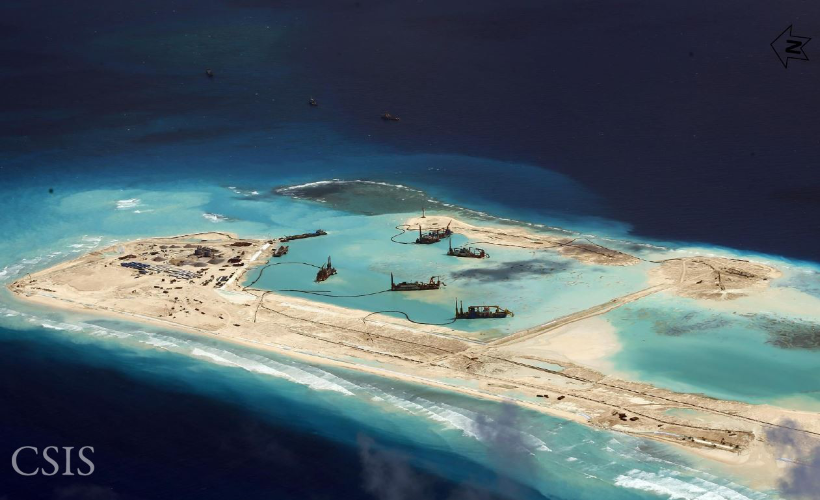Missile deployment: ‘China is now unambiguously militarizing the Spratlys’

Yesterday, we noted a Financial Times report that suggested this will be a “testing year” for U.S.-China relations, and that this is already conventional wisdom in Beijing. Some tensions such as the trade imbalances and the Korean nuclear issue are unavoidable. But Beijing also seems to be intentionally testing Washington’s limits in the Trump era — specifically in the South China Sea.
In 2015, President Xi Jinping said at a joint press conference with President Obama, “Relevant construction activities that China is undertaking in the Nansha [Spratly] islands do not target or impact any country and China does not intend to pursue militarization.”
Since then, China has installed all kinds of surveillance equipment and weaponry on the islands and reefs it claims. CNBC yesterday reported that in the past 30 days, American intelligence officials have seen the “deployment of anti-ship cruise missiles and surface-to-air missiles on Fiery Cross Reef, Subi Reef and Mischief Reef in the Spratly Islands.” This is merely the latest of many new military installations in the South China Sea.
Here’s how a few experts closely following the South China Sea responded to that news:
- “China is now unambiguously militarizing the Spratlys,” Lyle Morris, a senior policy analyst at RAND, tweeted.
- “US has really lost the initiative in South China Sea, and has no real levers to deter further Chinese military deployments,” lamented international law scholar Julian Ku, adding that he supported targeted sanctions to “lay down a marker” of disapproval.
- “Next will be fighters and establishment of baselines,” predicted Bonnie Glaser, an expert in Asia-Pacific security. Here is an explanation of baselines and freedom of navigation from the Asia Maritime Transparency Initiative, a project connected to the think tank that Glaser is affiliated with.
The Washington Post kicked off 2018 with this report: The South China Sea fell off Trump’s radar last year. He may have to pay attention in 2018. With this latest move in the Spratlys, Xi appears to be betting that Trump’s attention span hasn’t improved.






